by Filiz Ölmez
As a lawyer that has struggled against torture for years, it’s an irony lost on no one that I was tortured and then sentenced on charges of uttering “insults” and “threats” on the basis of fake police reports
It was 14 January 2015, an ordinary day in the southeastern province of Şırnak’s Cizre district. Come the evening, however, I got a shock when I got a phone call at home: The person on the other end of the line was asking me to come and attend the autopsy of a murdered 12-year-old.
I immediately rushed to Cizre State Hospital. When I got there, I could hardly make my way to the morgue due to the crowd that had gathered outside. Mayors, lawmakers from the region and citizens were all at the gate. The crowd was waiting for a lawyer to appear before the autopsy could start.
The autopsy did not take long; following the identification, we moved on to the diagnosis of the cause of death. The 12-year-old, Nihat Kazanhan (I had yet to learn his name), died of a shot to the back of his neck from a bullet from a rifle officially used by the Police Special Force.
Digesting the scene was really difficult. This was the first time I had ever attended an autopsy and stood that close to the dead body of a child who otherwise seemed to be sleeping innocently. But I had to remain calm, especially as I realized that the perpetrators would spoil the evidence if we didn’t collect it immediately. The first thing to do, accordingly, was to speak to the eyewitnesses.
That was not difficult. They were already at a corner of the hospital, waiting for the moment they would tell us what happened. But how tragic it was that the eyewitnesses were Nihat’s playmates. Nevertheless, we took the children to a quiet spot in the hospital and started asking them questions.
Where, when and why was Nihat killed? Still in shock, the children started to relate the exact moment.
Policemen, who were just eating sunflower seeds a few minutes before, turned their guns in our direction and shot Nihat. He didn’t do anything, we were just playing. After shooting Nihat, they went to the station, came back and collected some things from the ground and left again.”
Even though every evening news program was reporting that special forces had shot dead a 12-year-old child, local authorities and Cabinet ministers claimed in their statements that police had not shot and killed Nihat.
First thing the next morning, I went to the courthouse. I wanted to see the assigned prosecutor to get information about the investigation. I asked the prosecutor if the policemen had testified, adding that authorities should listen to the eyewitnesses immediately. The prosecutor, however, was tight-lipped on the information — a harbinger that he would issue a gag order.
The Cizre public prosecutor soon issued a confidentiality order, which, among other thing, prohibited us from accessing the autopsy results before we had even seen them. What did that mean? Starting from that moment, we could not access any information or documents in regard to the case apart from the prosecutor’s words.
While we fought to access the autopsy report for days, some media outlets started speculating that Nihat had been shot with a bullet from a shotgun that was stolen from a hunting store during the October 2014 Kobane protests. The autopsy report said the bullet in the back of his neck came from a gun used by police, but the media close to the government kept spreading fake news.
Following such news, we wanted to see the reports to avoid disinformation, but the prosecutor only denied the news reports. I then told the public about what I had learned during the autopsy and said the cause of death was not an ordinary shotgun.
In addition to the Şırnak Bar Association, dozens of bars, nongovernmental organizations and lawyers wanted to be part of the case into this painful incident. The interest from human rights defenders, activists and local and international media played a role – even if it was limited — in conducting an effective probe.
After a television channel belonging to a media group close to the government aired the moment of the shooting despite the gag order, a police officer, who had a service gun, was arrested and sent to jail. However, all the statements by high-ranking officials and inspectors’ reports said there were no police officers at the scene at the particular time of the incident. The arrested officer wrote in a letter to the prosecutor 20 days later that he was not the perpetrator, noting that the gun belonged to him but that a friend, another officer, had shot Nihat.
Authorities duly released the first officer and arrested the second.
Six months after the trial began, we noted that the transcripts of the voice recordings, the video footage, as well as the testimonies of the eyewitnesses, indicated that the crime had been committed in an organized fashion by a group of police officers. Moreover, we asserted that four other officials who were involved in the crime should be tried as suspects for first-degree murder, but the prosecutor refused to agree. The indictment pressed charges of “eventual intent” for murder for two suspects, while another officer was charged with “not conveying the crime.”
The court rejected our demand for additional indictments against other suspects, as well as an extension of the inquiry, even though footage showed that other officers did not attempt to do anything to the killer after Nihat was shot in front of his friends’ eyes. The court also rejected our demand even though officers went to and from the police station before returning to the scene to collect empty cartridge cases, bury them in the yard of the station and hold a closed-doors meeting with local authorities in the evening in a bid to cover up the crime.
The suspect falsely reported and documented that no bullets were missing when he handed over his registered gun, yet the court did not file an additional complaint for forging official documents. Finally, in line with the prosecutor’s opinion, the court sentenced the sole suspect to 13 years and four months in jail for “murder with eventual intent,” although it did grant a reduction due to “unjust provocation.”
The Kazanhan case was, of course, important because this was the first time that police officers had become suspects, judicial authorities had made arrests and courts had handed down prison sentences in the Kurdish region, where impunity has ruled for years. Nevertheless, we believe that each suspect would have received at least one life term for premeditated murder if the available evidence had actually been considered. We objected to the decision and took the case to the court of appeals, only for it to be summarily dismissed, prompting us to send it to the Court of Cassation.
On one hand, lawyers only had limited access to the courthouse, while ordinary citizens were prevented from attending the hearings due to the heavy security measures that the court imposed at every hearing. Courts might take very repressive stances, even as they seek to allay popular anger in cases in which there is great interest. The court did not directly restrict claims and defense, but it did return most of our demands.
In Şırnak, we have witnessed several occasions in which prosecutors have taken testimony unlawfully in their offices or disregarded claims of ill treatment or torture in the taking of statements. In many cases, we have made criminal complaints about such matters, but authorities have never launched any probes. In such a situation, it is not possible to speak of a properly functioning judicial mechanism.
And I, lawyer Filiz Ölmez, am one of the victims of that judicial mechanism that doesn’t work.
On March 2, 2016, just after curfews in Cizre had ended, I was approached from behind by a police officer who subsequently subjected me to torture when I stopped by to take photos of racists slogans on a wall to open a criminal complaint about them. Following my legal complaint about the torture, prosecutors prepared an indictment, charging the officer with simple bodily harm, as well as another indictment that charged me with making “insults” and “threats.”
In the end, I received a heavier sentence than the police officer who injured me. Even though a camera was rolling when I was thrown into a vehicle and tortured, that footage was never handed over to the prosecutor. In one piece of testimony to the Cizre Public Prosecutor’s Office, the police said there was a camera inside the vehicle, but in a separate piece of testimony, they said there wasn’t.
Thanks to a hospital report, voice recordings and the available evidence, it was clear to all concerned that I had been tortured, but the public prosecutor chose to believe the fake and contradictory police records before adding a witness against me in an indictment that appeared to have been prepared using a “copy and paste” method. Naturally, the court ruled against me in a rush.
As a lawyer that has struggled against torture for years, it’s an irony lost on no one that I was tortured and then sentenced on charges of uttering “insults” and “threats” on the basis of fake police reports.
This article was published as part of “Stories of Justice,” a project supported by the Friedrich Naumann Foundation for Freedom.



